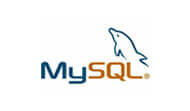通过 Boot Camp 解决 Windows 中的声音问题
摘要
在 Mac 上使用 Boot Camp 安装并更新 Windows 后,耳机或内、外扬声器可能不再发出声音。

原因
该问题可能是由于驱动程序或其他软件过期或损坏导致。
解决方案
若要解决此问题,请执行以下方法中的步骤,并从方法 1 开始。 如果方法 1 未能解决问题,请继续执行下一种方法。

方法 1: 更新到最新版本的 Boot Camp
若要下载并安装 Boot Camp 的最新更新,请按照以下步骤操作:
- 转到 Boot Camp 支持。
- 单击“下载”。
- 滚动找到针对您所运行的 Mac 系统的最新 Boot Camp 更新。
- 单击“下载”。
- 按照屏幕上的说明下载并安装 Boot Camp 的最新更新。
- 重新启动 Mac。
重要说明: Boot Camp 4.0 不支持 Windows XP 或 Windows Vista 版本。
方法 2: 安装最新版本的音频驱动程序
从 Mac 操作系统磁盘安装音频驱动程序或从 Apple 下载最新版本的音频驱动程序。

选项 1: 从您的 Mac OS 磁盘安装该驱动程序
- 启动您的 Mac 并启动到 Windows。
- 插入您的 Mac OS 安装磁盘。
a. 如果安装程序窗口没有自动显示,请单击“开始”按钮,然后单击“计算机”。
b. 单击包含 Mac OS 磁盘的驱动器。
c. 双击 Boot Camp 文件夹。
d. 双击 setup.exe。
e. 单击“安装”。 - 按照屏幕上的指示安装驱动程序。
- 重新启动 Mac。
选择 2: 从 Apple 网站安装驱动程序
- 启动您的 Mac 并启动到 Windows。
- 打开 Internet Explorer,并转到“Apple 支持” 。
- 单击“下载”。
- 滚动找到针对您所运行的 Mac 系统的最新音频驱动程序。
- 单击“下载”。
- 按照屏幕上的说明下载并安装针对您所运行的 Mac 的最新音频驱动程序。
- 重新启动 Mac。
方法 3: 下载并安装最新的 Realtek 驱动程序。
若要从制造商网站下载并安装最新的 Realtek 驱动程序,请按照下列步骤操作:
- 转到 Realtek 下载中心。
- 在“下载搜索”框中,键入“驱动程序”,然后单击“转到” 按钮。
- 单击与您当前的 Realtek 芯片组相匹配的软件标题。
有关详细信息,请参见计算机文档。 - 选择与您的 Windows 操作系统对应的站点。
- 按照屏幕上的说明下载并安装最新的驱动程序。
方法 4: 修复 Boot Camp 驱动程序。
若要修复 Boot Camp 驱动程序,请按照下列步骤操作:
- 修复 Boot Camp 驱动程序。
- 启动您的 Mac 并启动到 Windows。
- 插入您的 Mac OS 安装磁盘。 如果安装程序窗口没有自动显示,请单击
a.单击“开始”按钮,然后单击“计算机”。
b. 单击包含 Mac OS 磁盘的驱动器。
c. 双击 Boot Camp 文件夹。
d. 双击 setup.exe。 - 单击“修复”。
- 按照屏幕上的说明修复驱动程序。
- 重新启动 Mac。
方法 5: 重新安装声音驱动程序。
若要重新安装声音驱动程序,请按照下列步骤操作:
- 将 Mac 启动到 Windows。
- 打开“设备管理器”。
对于 Windows XP:
a. 单击“开始”,然后单击“控制面板”。
b. 如果看不到“系统”图标,请单击窗口左窗格中的“切换到经典视图”。
c. 双击“系统”图标。
d. 单击“硬件”选项卡。
e. 单击“设备管理器”按钮。
对于 Windows Vista 或 Windows 7。
a. 单击“开始”按钮。
b. 在“搜索”框中,键入“设备管理器”,然后单击“设备管理器”。 - 双击“声音、视频和游戏控制器”。
- 双击音频设备。
- 单击“驱动程序”选项卡。
- 单击“卸载”按钮。
- 出现提示时,重新启动 Windows。
- 插入您的 Mac OS 安装磁盘。
- 如果安装程序窗口未自动出现,请单击“开始”按钮,然后单击“计算机”。
- 单击包含 Mac OS 的驱动器。
- 双击 Boot Camp 文件夹。
- 双击 setup.exe。
- 单击“安装”。
- 按照屏幕上的说明安装驱动程序。
- 重新启动 Mac。
方法 6: 重新安装 Boot Camp。
若要卸载并重新安装 Boot Camp 服务,请执行下列步骤。
第 1 步:
对于 Windows 7:
- 依次单击“开始”按钮、“控制面板”和“卸载程序”。
- 单击“Boot Camp 服务”,然后单击“卸载”。
对于 Windows Vista:
- 依次单击“开始”按钮、“控制面板”、“程序”以及“程序和功能”。
- 单击“Boot Camp 服务”,然后单击“卸载”。
对于 Windows XP:
- 依次单击“开始”按钮、“控制面板”、“添加或删除程序”。
- 单击“Boot Camp 服务”,然后单击“卸载”。
步骤 2:
- 收到提示后重新启动 Windows。
- 插入您的 Mac OS 安装磁盘。
- 单击“开始”按钮,然后单击“计算机”。
- 单击包含 Mac OS 磁盘的驱动器。
- 双击 Boot Camp 文件夹。
- 双击 setup.exe。
- 单击“安装”。
- 重新启动 Mac。
How to switch between Windows and macOS
Restart, then press and hold the Option (or Alt) ⌥ key during startup to switch between Windows and macOS.
Learn more
If you have one of these Intel-based Mac models using OS X El Capitan or later, you don’t need a USB flash drive to install Windows:
- MacBook (all models)
- MacBook Air introduced in 2017 or later3
- MacBook Pro introduced in 2015 or later3
- iMac introduced in 2015 or later
- iMac Pro (all models)
- Mac Pro introduced in late 2013 or later
To remove Windows from your Mac, use Boot Camp Assistant, not any other utility.
For more information about using Windows on your Mac, open Boot Camp Assistant and click the Open Boot Camp Help button.
- If you’re using an iMac (Retina 5K, 27-inch, Late 2014) or iMac (27-inch, Late 2013) or iMac (27-inch, Late 2012) with a 3TB hard drive and macOS Mojave or later, learn about an alert you might see during installation.
- For example, if your Mac has 128GB of memory, its startup disk must have at least 128GB of storage space available for Windows. To see how much memory your Mac has, choose Apple menu > About This Mac. To see how much storage space is available, click the Storage tab in the same window. Or in macOS Ventura or later, choose Apple menu > System Settings, click General in the sidebar, then click Storage on the right.
- These Mac models were offered with 128GB hard drives as an option. Apple recommends 256GB or larger hard drives so that you can create a Boot Camp partition of at least 128GB.
Information about products not manufactured by Apple, or independent websites not controlled or tested by Apple, is provided without recommendation or endorsement. Apple assumes no responsibility with regard to the selection, performance, or use of third-party websites or products. Apple makes no representations regarding third-party website accuracy or reliability. Contact the vendor for additional information.
What you need to install Windows 10 on Mac
Boot Camp requires one of these Mac models, which have an Intel processor:
- MacBook introduced in 2015 through 2017
- MacBook Air introduced in 2012 through 2020, excluding MacBook Air (M1, 2020)
- MacBook Pro introduced in 2012 through 2020, excluding MacBook Pro (13-inch, M1, 2020)
- Mac mini introduced in 2012 through 2018
- iMac introduced in 2012 through 20201
- iMac Pro (all models)
- Mac Pro introduced in 2013 through 2019
The latest macOS updates, which can include updates to Boot Camp Assistant. You will use Boot Camp Assistant to install Windows 10.
64GB or more free storage space on your Mac startup disk:
- Your Mac can have as little as 64GB of free storage space, but at least 128GB of free storage space provides the best experience. Automatic Windows updates require that much space or more.
- If you have an iMac Pro or Mac Pro with 128GB of memory (RAM) or more, your startup disk needs at least as much free storage space as your Mac has memory.2
An external USB flash drive with a storage capacity of 16GB or more, unless you’re using a Mac that doesn’t need a flash drive to install Windows.
A 64-bit version of Windows 10 Home or Windows 10 Pro on a disk image (ISO) or other installation media. If installing Windows on your Mac for the first time, this must be a full version of Windows, not an upgrade.
- If your copy of Windows came on a USB flash drive, or you have a Windows product key and no installation disc, download a Windows 10 disk image from Microsoft.
- If your copy of Windows came on a DVD, you might need to create a disk image of that DVD.















